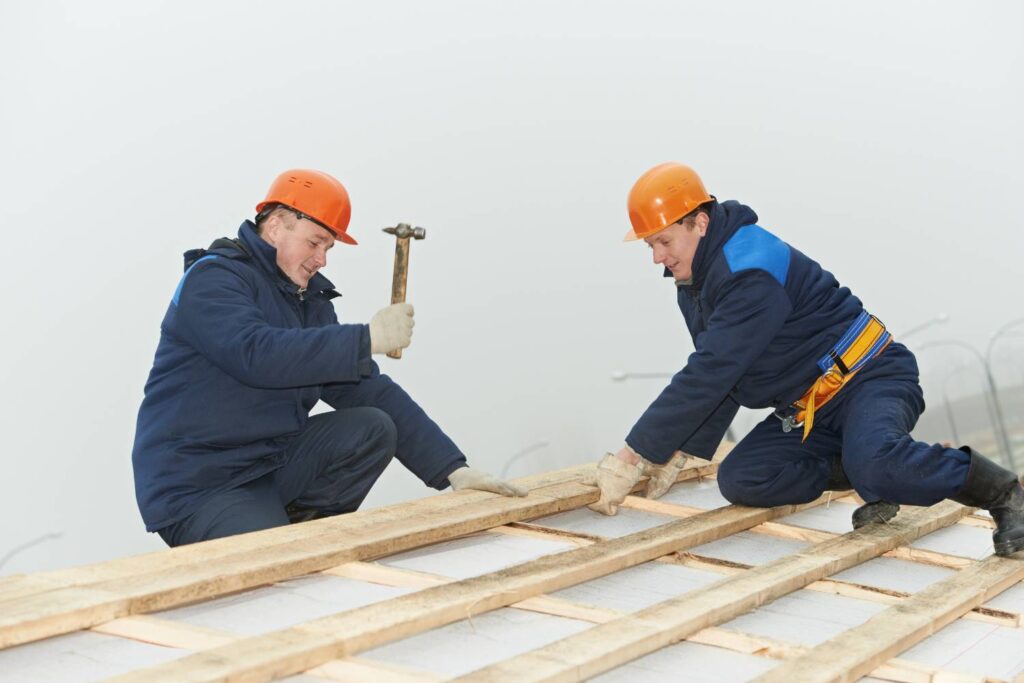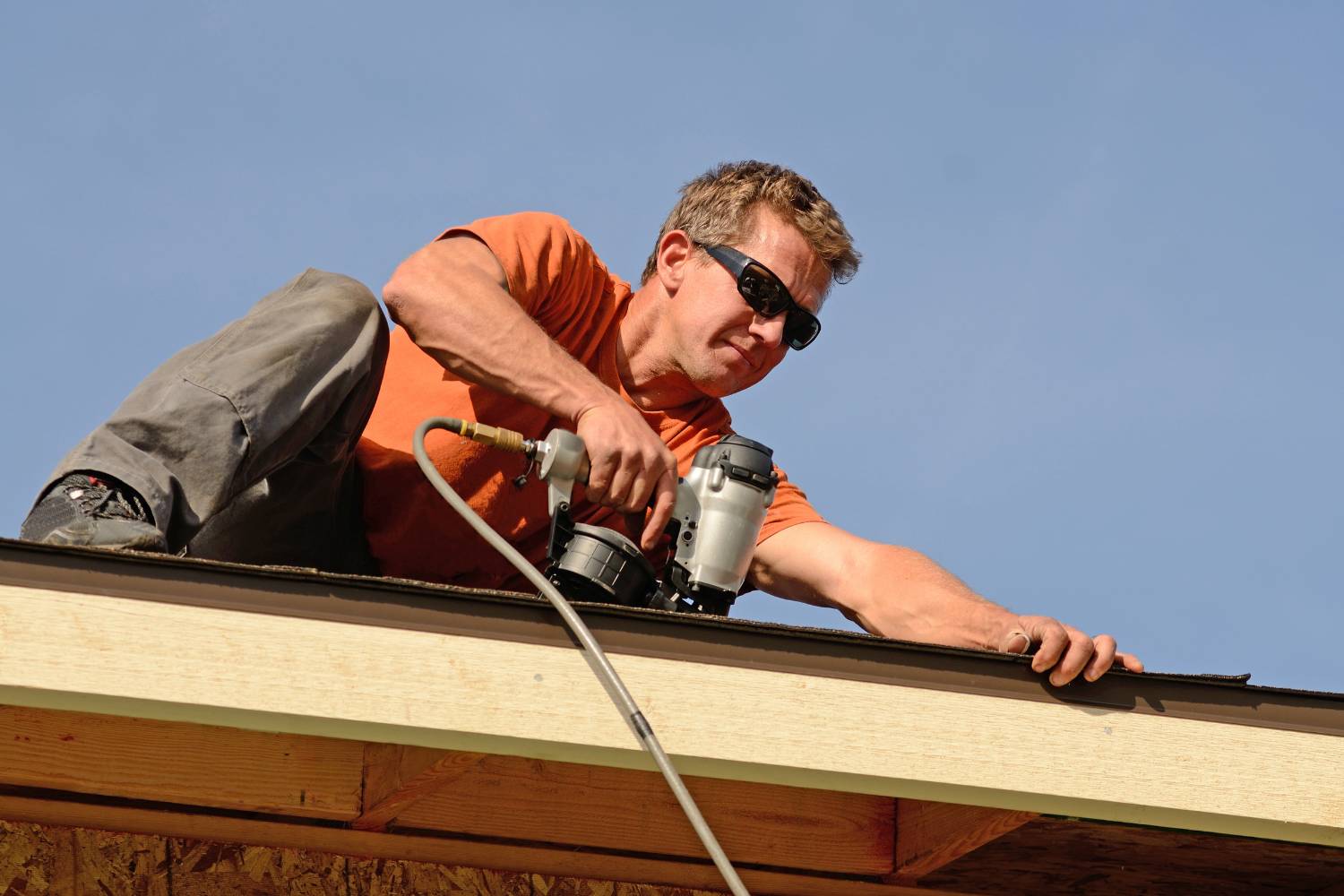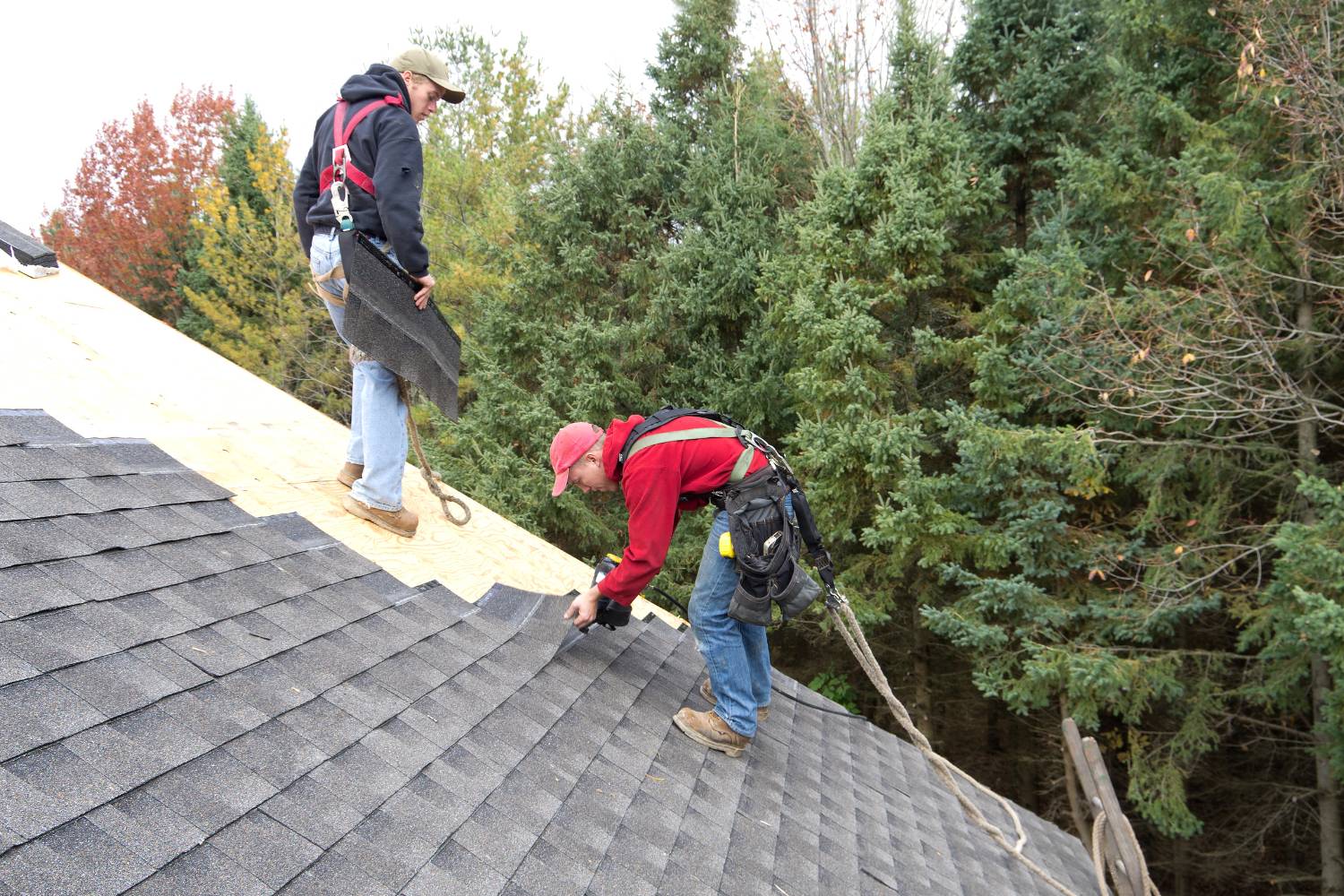A roof is more than just a structural necessity; it is the frontline defence of your home, shielding you from the elements and contributing significantly to your property's value.
This blog delves into the essential practice of roof restoration, a comprehensive approach that goes beyond simple repairs to rejuvenate your entire roof. Understanding and implementing regular roof restoration can greatly extend your roof's lifespan, enhance its functionality, and prevent costly full replacements.
We will explore the multifaceted benefits of roof restoration, from boosting property value to increasing energy efficiency and offering peace of mind. Whether you're a homeowner looking to maintain your roof or considering a future sale, this blog provides valuable insights into why roof restoration should be a key component of your home maintenance routine.
What Is Roof Restoration And Why Is It Important?
Roof restoration is a critical aspect of home maintenance that involves repairing, cleaning, and repainting a roof to extend its lifespan and enhance its functionality. Unlike minor repairs that address specific issues, roof restoration takes a comprehensive approach to rejuvenate the entire roof.
This process is vital for ensuring that the roof continues to protect the home from weather elements, pests, and other potential damages. Here, we explore the importance and benefits of roof restoration.
Benefits of Roof Restoration
One of the primary benefits of roof restoration is its ability to increase property value. A restored roof significantly enhances the aesthetic appeal of a home, making it more attractive to potential buyers. This improved visual appeal can also boost the market value of the property, providing homeowners with a good return on investment if they decide to sell their home in the future.
Another significant advantage of roof restoration is the extension of the roof's longevity. Regular restoration can prevent the need for costly full replacements by identifying and fixing minor damages before they escalate into major issues. This proactive maintenance approach ensures that the roof remains in good condition for a longer period, ultimately saving homeowners from the expense and hassle of premature roof replacement.
Roof restoration also enhances protection against weather elements. Restored roofs are better equipped to withstand extreme conditions such as heavy rain, snow, and hail. The restoration process involves thorough inspections and repairs that ensure the roof remains a reliable barrier against water infiltration and subsequent damage. This added durability provides peace of mind, knowing that the roof can protect the home during severe weather events.
How Often Should You Restore Your Roof?
Restoring your roof is an essential part of home maintenance that ensures the longevity and integrity of your home. Determining the frequency of roof restoration can depend on several factors including the type of roofing material, environmental conditions, and the age of the roof. Here, we consolidate insights from industry experts to provide a comprehensive guide on how often you should consider restoring your roof.
Signs You Need a Roof Restoration
Identifying when your roof needs restoration can save you from more significant and costly repairs in the future. Look for the following signs:
- Worn Roof Tiles: Cracked, faded, or crumbling tiles indicate that the roof has been significantly impacted by weather conditions and age.
- Damaged Mortar: Aging mortar may need replacement or reinforcement to prevent cracking and detachment from ridge caps.
- Mould, Rot, and Lichen: These indicate excess moisture and potential leaks, which can attract pests and further damage the roof.
- Metal Corrosion: For metal roofs, rust and corrosion are clear indicators of the need for restoration.
- Sagging Roof: A sagging roof structure is a critical sign of deterioration.
- Damaged or Worn Gutters: Gutters that are damaged or leaking significantly can indicate issues with the roof’s ability to manage water drainage.
Frequency of Roof Restoration
The frequency of roof restoration depends on several factors:
- Age of the Roof: Typically, roofs last between 20 to 25 years. If your roof is within this age range and shows signs of deterioration, it may be time for restoration.
- Type of Roofing Material: Different materials have varying lifespans. For example:
- Asphalt Shingles: May need restoration every 10-15 years.
- Metal Roofs: Can last 20-25 years before requiring restoration.
- Tile Roofs: Generally fall within the 15-20 year restoration interval.
- Environmental Conditions: Exposure to harsh weather, debris, and pollution can accelerate the wear and tear of roofing materials, necessitating more frequent restorations.
- Maintenance History: Regular maintenance can extend the lifespan of a roof, but neglect can lead to more frequent needs for restoration.
How Can You Extend The Life Of Your Roof?
Maintaining the longevity of your roof is essential for safeguarding your home and avoiding costly repairs. Regular restoration practices can significantly extend the life of your roof by addressing potential problems before they escalate. Here are key strategies for extending your roof’s lifespan through regular restoration and maintenance:
Choose the Right Roofing Materials
- Durability: The type of roofing material you select plays a crucial role in the roof's lifespan. Materials like asphalt shingles are cost-effective and low-maintenance, while metal roofing can last up to 60 years but requires a higher initial investment.
- Climate Suitability: Ensure the chosen material is suitable for the local climate to maximise durability and performance.
Schedule Regular Inspections
- Professional Inspections: Regular inspections by a professional contractor help identify and address minor issues before they become major problems. It's especially important to inspect the roof after extreme weather events.
- Frequency: Aim for at least two inspections per year, ideally during seasonal transitions.
Keep Gutters and Downspouts Clear
- Debris Removal: Regularly clean gutters and downspouts to prevent water buildup, which can cause damage over time.
- Water Flow: Ensuring proper water flow away from the roof prevents moisture accumulation and potential leaks.
Trim Overhanging Trees
- Prevent Damage: Trim back branches that hang over the roof to prevent moisture retention, physical damage, and pest access.
- Safety: Hire a professional arborist if you’re uncomfortable doing it yourself.
Repair Any Damage Promptly
- Immediate Action: Address any signs of damage, such as cracked or missing shingles, immediately to prevent further deterioration.
- Professional Help: Engage a professional contractor to assess and repair the damage effectively.
Ensure Proper Ventilation
- Heat and Moisture Management: Proper ventilation helps to manage heat and moisture levels in the attic, preventing issues like ice damming and premature ageing of shingles.
- Vent Installation: Install ridge vents or soffit vents to improve airflow and maintain the roof's condition.
Clean the Roof and Gutters Regularly
- Moss and Algae Removal: Regular cleaning prevents the growth of moss and algae, which can damage roofing materials.
- Gutter Maintenance: Clear gutters to prevent water overflow and damage to the roof structure.
Check for Exposed Nails and Flashing
- Loose Nails: Hammer in any loose nails to prevent water entry and potential structural damage.
- Flashing Inspection: Regularly inspect and reseal flashing around chimneys, vents, and intersections to maintain a watertight seal.
Address Water Stains and Leaks Immediately
- Leak Detection: Pay attention to water stains on ceilings and address leaks promptly to prevent mould growth and structural damage.
- Professional Assessment: If leaks are detected, consult a professional to identify and fix the source.
How Does Climate Affect Roof Longevity And Restoration Needs?
Climate plays a critical role in determining the lifespan of your roof and its maintenance requirements. Understanding the impact of various weather conditions can help homeowners and commercial property managers make informed decisions about roofing materials, maintenance schedules, and restoration needs. Here, we explore how different climatic factors affect roof longevity and the necessary steps to mitigate these impacts.
The Effects of Sun and Heat on Roofing Materials
- UV Rays: Prolonged exposure to ultraviolet (UV) rays can cause the essential oils in roofing materials to dry out, leading to cracks, curling, and eventual leaks. UV rays are particularly harsh on materials like asphalt shingles.
- Heat: High temperatures cause roofing materials to expand and contract, leading to loosening and damage over time. This thermal movement can also cause warping and degradation, necessitating more frequent inspections and maintenance.
The Impact of Rain and Moisture on Roofs
- Water Seepage: Rainwater can infiltrate small cracks and crevices, leading to leaks and structural damage. Continuous exposure to moisture can also cause mould and mildew growth, which can further compromise the roof's integrity and pose health risks.
- Snow and Ice: In colder climates, snow and ice can accumulate on the roof, causing stress due to their weight and leading to ice dams that prevent proper drainage. Freeze-thaw cycles exacerbate the expansion and contraction of roofing materials, accelerating wear and tear.
The Role of Wind and Hail
- Wind Damage: Strong winds can lift and tear roofing materials, especially if they are not properly secured. Over time, this can lead to significant structural damage and increase the need for repairs or replacement.
- Hail Impact: Hailstones can dent and fracture roofing materials. The extent of the damage depends on the size and velocity of the hail, with larger stones causing more severe damage.
Climate-Specific Considerations
- Temperature Fluctuations: Regions with significant temperature swings, such as those with hot summers and cold winters, see accelerated deterioration due to constant expansion and contraction of roofing materials.
- Coastal Areas: Salt air and high humidity in coastal regions can corrode metal roofing and other materials, requiring more frequent maintenance and specialised, weather-resistant materials.
- Humid Climates: High humidity promotes mould and moss growth, which can deteriorate roofing materials and reduce their lifespan.
Weather-Resistant Roofing Options
- Metal Roofs: Highly resistant to sun, wind, and rain, metal roofs are durable but can be more expensive and require professional installation.
- Asphalt Shingles: Affordable and easy to install, asphalt shingles are widely used but may not be as durable in extreme weather conditions.
- Membrane Roofing: Suitable for commercial buildings, these roofs offer strong resistance to wind and water but require expert installation and regular maintenance.
What Are The Long-Term Benefits Of Regular Roof Restoration?
Regular roof restoration is a vital aspect of home maintenance that ensures the durability, safety, and efficiency of your roof. By investing in regular roof restoration, homeowners can reap numerous long-term benefits. Here, we outline the key advantages of maintaining your roof through consistent restoration efforts.
Prevents Major Repairs
One of the most significant advantages of regular roof maintenance is the prevention of major repairs. Through routine inspections and maintenance, potential problems such as leaks, cracks, or loose shingles can be detected early. Addressing these minor issues promptly prevents them from escalating into major, costly repairs.
By fixing small problems before they become significant, homeowners can save a substantial amount of money in the long run. This proactive approach not only extends the roof's lifespan but also ensures that any issues are managed before they compromise the structural integrity of the home.
Extends Roof Lifespan
Regular maintenance and timely repairs significantly extend the lifespan of your roof. By ensuring that your roof remains in optimal condition, the need for a complete roof replacement can be postponed, reducing the frequency of large expenses. A well-maintained roof can last beyond its expected lifespan, providing better value for your investment. This means that homeowners can enjoy the benefits of a durable and reliable roof for many years, without the worry of premature deterioration or failure.
Enhances Energy Efficiency
Proper roof maintenance plays a crucial role in enhancing energy efficiency. Ensuring that your roof is well-insulated and ventilated helps maintain optimal indoor temperatures, reducing the load on heating and cooling systems.
Improved insulation and ventilation result in lower energy consumption, leading to significant savings on utility bills. This not only benefits the environment by reducing energy use but also provides financial relief to homeowners through reduced energy costs.
Increases Home Value
A well-maintained roof enhances the aesthetic appeal of your home, making it more attractive to potential buyers. Homes with regularly maintained roofs are likely to fetch higher prices in the real estate market, as buyers are assured of the roof's condition and longevity.
By investing in regular roof restoration, homeowners can increase their property's curb appeal and market value, ensuring a higher return on investment if they decide to sell their home in the future.
Peace of Mind
Regular roof restoration ensures that your roof is in optimal condition to withstand extreme weather conditions such as storms, heavy rains, and high winds. Knowing that your roof is well-maintained and free from potential issues provides peace of mind, reducing stress about unexpected repairs and damages. Homeowners can rest assured that their property is protected and that they have taken the necessary steps to maintain their roof's integrity.
Conclusion
Roof restoration is an essential practice that offers significant benefits for homeowners. By taking a proactive approach to roof maintenance, you can extend the lifespan of your roof, enhance its functionality, and prevent costly replacements. This comprehensive process not only increases property value and energy efficiency but also ensures your home remains protected against the elements.
Regular inspections, timely repairs, and proper maintenance are crucial in safeguarding your investment and providing peace of mind. As you consider the future of your home, make roof restoration a priority in your maintenance routine to enjoy the long-term benefits it offers.
Frequently Asked Questions
Roof restoration is a comprehensive process that involves repairing, cleaning, and repainting your roof to extend its lifespan and improve its functionality. It is important because it not only enhances the aesthetic appeal of your home but also ensures that the roof continues to protect your home from weather elements, pests, and other potential damages. Regular restoration can prevent costly full replacements by addressing minor issues before they become major problems.
The frequency of roof restoration depends on several factors, including the type of roofing material, environmental conditions, and the age of the roof. Generally, asphalt shingles may need restoration every 10-15 years, metal roofs every 20-25 years, and tile roofs every 15-20 years. Harsh weather conditions and lack of regular maintenance can necessitate more frequent restorations. Regular inspections can help determine the optimal schedule for your specific roof.
Key signs that your roof needs restoration include worn or cracked roof tiles, damaged mortar, mould, rot, or lichen growth, rust and corrosion on metal roofs, a sagging roof structure, and damaged or leaking gutters. Identifying these signs early can save you from more significant and costly repairs in the future.
Climate plays a critical role in the longevity of your roof. UV rays from the sun can cause roofing materials to dry out and crack. High temperatures cause materials to expand and contract, leading to damage over time. Continuous exposure to moisture from rain or snow can lead to leaks and mould growth. Wind and hail can cause physical damage to the roof. Understanding your local climate's impact on your roof can help you tailor your maintenance and restoration efforts accordingly.
Regular roof restoration offers several long-term benefits, including the prevention of major repairs, extended roof lifespan, enhanced energy efficiency, increased home value, and peace of mind. By maintaining your roof through regular restoration, you ensure that it remains in optimal condition to protect your home, reduce energy consumption, and improve the overall marketability of your property.


